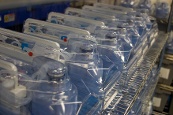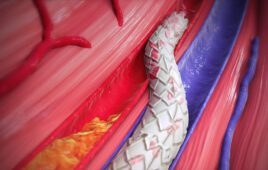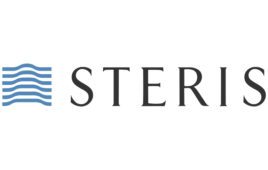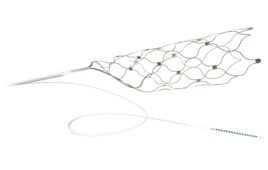
FDA registration and ISO 13485 certification are required to maintain quality system operational standards.
Medical device manufacturers can easily avoid expense by choosing an injection molder experience in the medical industry. The injection molder will have the facility, equipment, trained personnel for this type of manufacturing and relationships with vendors to provide quality materials and resources. Included in this are the specialized skills like design for manufacturability, mold building and material knowledge for a more efficiently engineered and manufactured product.
Quality operational controls are a primary requirement for medical injection molding. FDA registration and ISO 13485 certification are required to maintain these quality system operational standards. FDA registration is required when producing and distributing medical devices intended for commercial distribution in the U.S. This requires the Quality Management System to be in compliance with the rules established under FDA Quality System Regulation as established under the 21 Code of Federal Regulation Part 820 (Medical Devices). With this FDA registration not only components that are distributed to a finished device manufacturer, but to manufacture finished good devices or components that are packaged or labeled for commercial distribution of health-related purposes to an end user.
ISO 13485:2003 mandates maintaining quality procedures while emphasizing documentation in order to verify procedures that provide controlled conditions for the activities and processes needing to be performed. This includes risk management activities and full lot traceability. Because medical devices in the U.S. are regulated by the FDA, they are classified into three classes: Class I, Class II and Class III – depending upon critical risk factors. Each device class requires a different level of regulation and compliance.
When choosing a plastic for medical devices or components, design considerations are important. Material selection, production process and part geometry are interdependent. Usage conditions such as temperature, chemical contact and resistance, applied stresses during use, transparency/opacity, color (some items use color to aid in identification), aesthetics, water absorption, lubricity and wear resistance need to be considered.
For example, if the device is going to be used by a surgeon it should be light and have good ergonomics and functionality. Drug delivery products comprised of needles, tubing, bags, manifolds, Y-sites, clips and connectors are mostly disposable. Therefore its important to consider cost and other factors like chemical resistance, flexibility, transparency, clarity, sterilization resistance and toughness. Endoscopy uses a lot of electronics and ancillary products like cameras, light sources, monitors and recording equipment. Electric, power and thermal management is very important for these types of products including durability and toughness.
Medical components and devices may have complex shapes that cannot be molded directly. The plastic parts will need to be separately made and joined together with adhesives or by welding. Changes in the plastics from welding processes must be considered as well as the introduction of adhesives and the chemicals used in them.
A very important material consideration for medical device and components is sterilization method and material compatibility, including is this a single vs repeat sterilization process. The effort to evaluate these factors is reduced by using the medical grades of plastics. The manufacturers of these plastics likely already had a significant number of the studies done which means a reduction of time and cost for commercialization.
Polyethyelene material has low heat deflection temperatures making them unsuitable for steam and autoclave sterilization. Applications and uses include containers, packaging films, pouches, lidstock, breather patches and headers for bags. Ultra-high-molecular-weight polyethyelene is used as the wear bearing surface of hip and knee arthroplasty and total joint replacement.
Polypropylene material is adequately stabilized and can survive the radiation stabilization process with antioxidant remaining so as to protect the sterilized product from more degradation. Polypropylene has a melting temperature high enough for autoclave applications.
Polystyrene material is a colorless, hard plastic with limited flexibility. This can be transparent or can be made in various colors. It is economical and used for producing plastic assembly kits, plastic cutlery, and other common objects where a fairly rigid, economical plastic is desired. Polystyrene is not recommended for steam and autoclave sterilization. But they retain their properties after exposure to one normal EtO sterilization cycle as well as gamma radiation, UV light sterilization and electron beam due to its high aromatic content. Although, some color changes have been found after e-beam sterilization. This material has been used in diagnostic instruments and disposable laboratory ware like petri dishes, tissue culture components, flasks, pipettes and other medical devices.
Polycarbonate material is impact resistant, clear, high heat resistant, dimensional stability, resistant to UV light and contains flame retardant properties. Gamma and EtO sterilization can be done and ultrasonic welding can be used. Typical applications include: reservoirs, high-pressure syringes, artery cannulas, stopcocks, luers, centrifugal force separators, blood filter housings and dialyzer housings.
PEEK also known as polyetheretherketone is a thermoplastic with extraordinary mechanical properties. PEEK is highly resistant to thermal degradation as well as organic and aqueous environments. PEEK has outstanding wear resistance, good dielectric strength, volume resistivity, tracking resistance and excellent radiation resistance.
Crescent Industries
crescentind.com





The price of a plastic mold is determined by the component complexity,component size, tool kind, steel utilized, quantity of cavities, tolerances, earning actions within the tool, anticipated tool life, resin chosen for the component, and component aesthetics. Even though these expenses are amortized more than the amount of components to become created, the genuine price also consists of the molding cycle and processing operations required to create the component.
Therefore,even though a 3 plate or hot runner tool will need much more in the beginning,they’ll generally not need an operator or perhaps a component and runner separator to degate and trim components as would a two plate tool. Consequently,piece component cost might be reduced in return to get a slightly greater tool price.